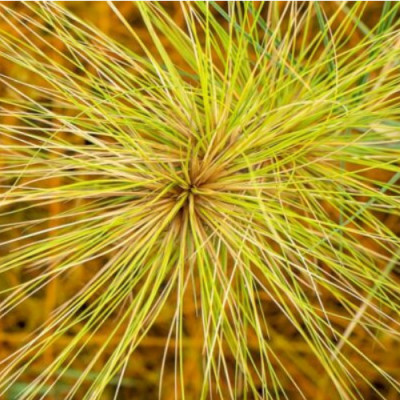Triodia pungens, commonly known as spinifex, is more than just a useful plant.
Traditional Owners have known about its astonishing properties for a very long time. It’s drought and fire resistant and used to heal wounds and make tools such as spearpoints, axes and knives. It’s also naturally abundant.
To add to its list of uses, the cellulose nanofibres extracted from spinifex will now be used in injectable medical gels to treat arthritis and osteoarthritis. It can also be used for cosmetic procedures.
This breakthrough has been made possible by a collaboration between Bulugudu, a collection of companies owned by the Indjalandji-Dhidhanu people, and Uniseed. The collaboration will fund majority Indigenous-owned company Trioda Wilingi to develop the gels from spinifex harvested in North West Queensland.
The Science of Spinifex’s Strength
The project started when researchers at the Australian Institute for Bioengineering and Nanotechnology wanted to know the science behind what makes spinifex so special.
“Cellulose fibres are in high demand as reinforcing agents for many products, including surgical gloves, paper, nappies and condoms,” says Dr Jane Fitzpatrick, Chief Executive Officer of the Australian National Fabrication Facility.
“In the case of spinifex, the reinforcing fibres maintain a high aspect ratio, meaning that they have a high length to width ratio and therefore a high surface area to volume ratio.
“This reinforces them and makes them really strong and ideal for many products.”
Spinifex has shown enough promise that the Australian National Fabrication Facility is currently collaborating with Trioda Wilingi on commercialising its use.
A Milder Extraction Process
More common materials like bamboo or wood require a long process to extract their cellulose. They also require the use of harsh chemicals.
In contrast, spinifex has the benefit of needing a very mild extraction process. It involves washing, drying and grinding down the grass to produce a fine powder. The nanofibres are then extracted by pulping the powder and separating them from the mixture with mechanical energy.
The Makings for a Better Medical Gel
Early data shows that gels using the spinifex nanofibres will last longer, be easier to inject and may be safer than current medical gel products.
The spinifex fibres help retain water by forming a three-dimensional network within the volume of water. Hydrogels become thin under pressure, but the fibres of the spinifex allow the gel to flow through the needle and then reform on the other side.
Managing the Spinifex Crops
The spinifex plant grows all year round, and the spinifex resin is in abundance between April and September. It is a bountiful crop with hundreds of thousands of tonnes growing in the wild.

Bulugudu has a permit to harvest 77,000 square kilometres of the crop.
Colin Saltmere AM, Director of Bulugudu, says it’s vital that Indigenous people continue to have a say in how spinifex is grown and managed.
“The Indjalandji-Dhidhanu people, the Traditional Owners of the upper Georgina River region in Queensland, have known about spinifex for a long time. We know how to look after it naturally with specialist farming equipment,” says Colin.
“It needs to remain protected and harvested in such a way that it doesn’t harm the environment.”
Next Steps
Dr Jane Fitzpatrick says the Indjalandji-Dhidhanu people are a vital part of the partnership.
“It was the idea of the Traditional Owners, and their understanding and knowledge of spinifex is key to the project,” she says.
“There is a Biodiscovery Act in Queensland, which means you have to have a licence to take anything from Country. Bulugudu has a licence so they will continue to manage and control it.
“Next steps depend on the research period ahead, but we are very excited to continue this work and see the benefits of using spinifex unfold.”
Read the original article on Scitech.
